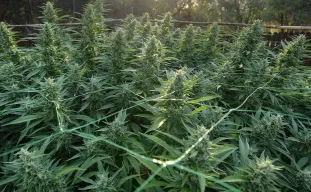 Grow GuidesHow to Support Heavy Buds OutdoorsOutside, weed plants can easily reach heights of eight feet with heavy tops on each branch - what a lovely sight.
Howeve...2025-04-03
Grow GuidesHow to Support Heavy Buds OutdoorsOutside, weed plants can easily reach heights of eight feet with heavy tops on each branch - what a lovely sight.
Howeve...2025-04-03Latest posts
 Study: Quantification of THC Levels in Different Varieties of Cannabis Sativa2025-09-17
Study: Quantification of THC Levels in Different Varieties of Cannabis Sativa2025-09-17 5 Crucial Tips for Successfully Cultivating Landrace Cannabis Strains2025-09-12
5 Crucial Tips for Successfully Cultivating Landrace Cannabis Strains2025-09-12 Top 7 Landrace Cannabis Strains Every Grower Should Cultivate2025-09-10
Top 7 Landrace Cannabis Strains Every Grower Should Cultivate2025-09-10 Future #1 Week by Week Grow Diary2025-09-08
Future #1 Week by Week Grow Diary2025-09-08 What Are Landrace Cannabis Strains and Why Are They Special?2025-09-05
What Are Landrace Cannabis Strains and Why Are They Special?2025-09-05Browse by category
Grow Guides
Grow cannabis with confidence using our complete guides. Step-by-step advice from germination to harvest by WeedSeedsExpress.
Browse all Grow Guides Grow GuidesHow to Support Heavy Buds OutdoorsOutside, weed plants can easily reach heights of eight feet with heavy tops on each branch - what a lovely sight.
Howeve...2025-04-03
Grow GuidesHow to Support Heavy Buds OutdoorsOutside, weed plants can easily reach heights of eight feet with heavy tops on each branch - what a lovely sight.
Howeve...2025-04-03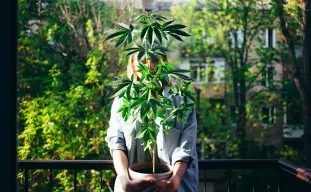 Grow GuidesGrowing Weed in an Apartment - 5 TipsIf you live in a large town or city, the chances are that you live in an apartment or flat. If you fancy doing a bit of ...2024-12-04
Grow GuidesGrowing Weed in an Apartment - 5 TipsIf you live in a large town or city, the chances are that you live in an apartment or flat. If you fancy doing a bit of ...2024-12-04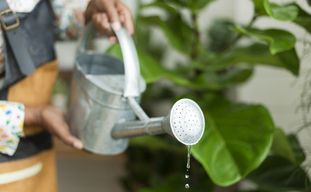 Grow GuidesHow Much Water for 5 Gallon (20L) Autoflower? A Practical Guide for GrowersI've spent years perfecting my indoor grow setup, and nothing beats the satisfaction of harvesting potent buds from my o...2024-11-26
Grow GuidesHow Much Water for 5 Gallon (20L) Autoflower? A Practical Guide for GrowersI've spent years perfecting my indoor grow setup, and nothing beats the satisfaction of harvesting potent buds from my o...2024-11-26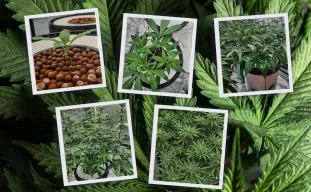 Grow GuidesHow To Grow Autoflowers Week by WeekOnce you’ve got into the swing of growing autoflowering cannabis, you’ll find it a fun and therapeutic proce...2024-11-01
Grow GuidesHow To Grow Autoflowers Week by WeekOnce you’ve got into the swing of growing autoflowering cannabis, you’ll find it a fun and therapeutic proce...2024-11-01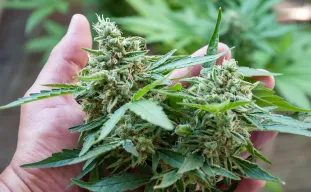 Grow GuidesDense Nugs Guide: How to grow dense Buds?Growing your own cannabis plants is not a difficult task, and even first-time growers can achieve a successful yield. Ye...2024-09-17
Grow GuidesDense Nugs Guide: How to grow dense Buds?Growing your own cannabis plants is not a difficult task, and even first-time growers can achieve a successful yield. Ye...2024-09-17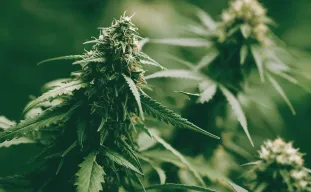 Grow GuidesHow to grow weed fast?Growing cannabis is a time-consuming process, and most growers are keen to get to the curing stage as quickly as possibl...2024-09-17
Grow GuidesHow to grow weed fast?Growing cannabis is a time-consuming process, and most growers are keen to get to the curing stage as quickly as possibl...2024-09-17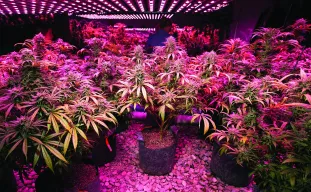 Grow GuidesCannabis Micro Grow: Growing a Small Weed PlantMany people are taking up growing their own cannabis plants indoors these days. However, not everyone has the space to g...2024-09-17
Grow GuidesCannabis Micro Grow: Growing a Small Weed PlantMany people are taking up growing their own cannabis plants indoors these days. However, not everyone has the space to g...2024-09-17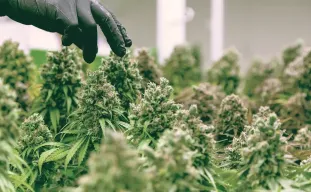 Grow GuidesWhen To Harvest Cannabis For Best ResultsIt is almost time for the best moment of growing cannabis. Harvesting gets you one step closer to enjoying the fruits of...2024-09-17
Grow GuidesWhen To Harvest Cannabis For Best ResultsIt is almost time for the best moment of growing cannabis. Harvesting gets you one step closer to enjoying the fruits of...2024-09-17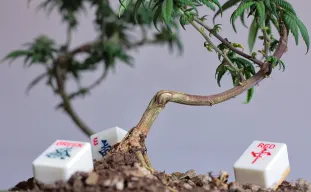 Grow GuidesCannabonsai Guide: How to Grow a Bonsai Weed Plant?Bonsai weed plants are neither myth nor legend. They are very real and fun ways to cultivate a good-looking potted strai...2024-09-17
Grow GuidesCannabonsai Guide: How to Grow a Bonsai Weed Plant?Bonsai weed plants are neither myth nor legend. They are very real and fun ways to cultivate a good-looking potted strai...2024-09-17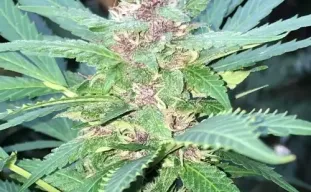 Grow GuidesCultivating Autoflowers in Extremely Small SpacesAre you passionate about growing cannabis, but your living space is tiny? Do you want homegrown buds, but bulky equipmen...2024-09-17
Grow GuidesCultivating Autoflowers in Extremely Small SpacesAre you passionate about growing cannabis, but your living space is tiny? Do you want homegrown buds, but bulky equipmen...2024-09-17Grow Journals
Our customer grow journals provide an inside look at our cannabis seeds' journey from germination to harvest.
Browse all Grow Journals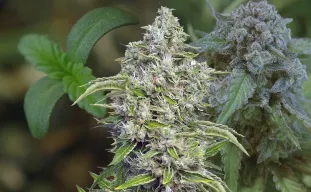 Grow JournalsFuture #1 Week by Week Grow DiaryFuture #1 hit the ground with high hopes and lights set to find the right mix between power and efficiency. MalumProhibi...2025-09-08
Grow JournalsFuture #1 Week by Week Grow DiaryFuture #1 hit the ground with high hopes and lights set to find the right mix between power and efficiency. MalumProhibi...2025-09-08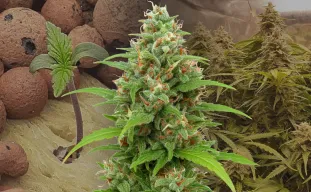 Grow JournalsMagnum Auto Week by Week Grow DiaryRoberts was aiming high with Magnum Auto from WeedSeedsExpress, a strain known for its high yields and strong effects on...2025-08-25
Grow JournalsMagnum Auto Week by Week Grow DiaryRoberts was aiming high with Magnum Auto from WeedSeedsExpress, a strain known for its high yields and strong effects on...2025-08-25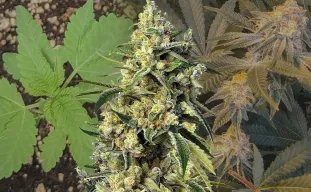 Grow JournalsSweet Tooth Week by Week Grow DiaryWilstang wanted to grow Sweet Tooth Feminized seeds because they would make resin-rich, sugary buds that would be great ...2025-08-18
Grow JournalsSweet Tooth Week by Week Grow DiaryWilstang wanted to grow Sweet Tooth Feminized seeds because they would make resin-rich, sugary buds that would be great ...2025-08-18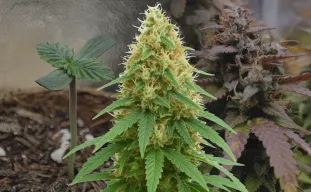 Grow JournalsPineapple Express Auto Week By Week Grow DiaryWhen you bring the legendary Pineapple Express autoflower to life, you know it's going to be a good grow. Question_a_pig...2025-08-11
Grow JournalsPineapple Express Auto Week By Week Grow DiaryWhen you bring the legendary Pineapple Express autoflower to life, you know it's going to be a good grow. Question_a_pig...2025-08-11 Grow JournalsTrainwreck Week by Week Grow DiaryEvery grower has their own "white whale." GrowLady found hers in the well-known, powerful, and very strong strain called...2025-08-04
Grow JournalsTrainwreck Week by Week Grow DiaryEvery grower has their own "white whale." GrowLady found hers in the well-known, powerful, and very strong strain called...2025-08-04 Grow JournalsSanta Maria Auto Week By Week Grow DiaryIt wasn't just about growing when BudBanditUK set his sights on Santa Maria Autoflower. He wanted to capture the legenda...2025-07-28
Grow JournalsSanta Maria Auto Week By Week Grow DiaryIt wasn't just about growing when BudBanditUK set his sights on Santa Maria Autoflower. He wanted to capture the legenda...2025-07-28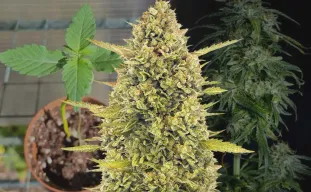 Grow JournalsAcapulco Gold Week By Week Grow diaryEvery experienced grower has that one strain they want to master; it's the one that makes them think of sunshine and fam...2025-07-21
Grow JournalsAcapulco Gold Week By Week Grow diaryEvery experienced grower has that one strain they want to master; it's the one that makes them think of sunshine and fam...2025-07-21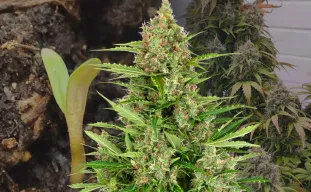 Grow JournalsWedding Cake Auto Week By Week Grow DiaryEvery grower eventually comes across a strain that they remember because it is so beautiful and strong. Asnoriu, the gro...2025-07-14
Grow JournalsWedding Cake Auto Week By Week Grow DiaryEvery grower eventually comes across a strain that they remember because it is so beautiful and strong. Asnoriu, the gro...2025-07-14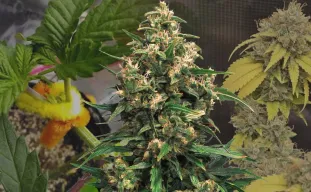 Grow JournalsStrawberry Cough Week by Week Grow DiaryStarting in Week 7? Yes, that's true: life can be busy, but plants don't wait. Hempface86 started documenting this juicy...2025-07-07
Grow JournalsStrawberry Cough Week by Week Grow DiaryStarting in Week 7? Yes, that's true: life can be busy, but plants don't wait. Hempface86 started documenting this juicy...2025-07-07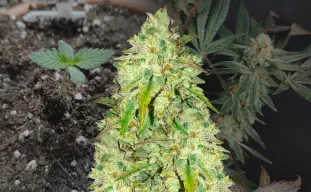 Grow JournalsSunset Sherbet Week by Week Grow DiaryPeople who grow that strain all over the world pay attention when Mrs. Larimar requests it. It's Sunset Sherbet Feminize...2025-07-01
Grow JournalsSunset Sherbet Week by Week Grow DiaryPeople who grow that strain all over the world pay attention when Mrs. Larimar requests it. It's Sunset Sherbet Feminize...2025-07-01Grow Tips
Our grow tips gives readers quick, easy-to-follow advice, aimed at helping both beginner and experienced growers with a successful grow.
Browse all Grow Tips Grow Tips5 Crucial Tips for Successfully Cultivating Landrace Cannabis StrainsCrack open a jar of Durban Poison and you’re not just smelling weed, you’re inhaling history. Landrace canna...2025-09-12
Grow Tips5 Crucial Tips for Successfully Cultivating Landrace Cannabis StrainsCrack open a jar of Durban Poison and you’re not just smelling weed, you’re inhaling history. Landrace canna...2025-09-12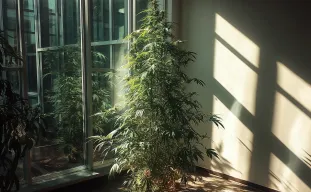 Grow Tips6 Expert Tips for Controlling Height When Growing Sativa Cannabis IndoorsWe've all been there: you get those Sativa seeds or clones and can't wait to start a new indoor grow, but then you see y...2025-08-28
Grow Tips6 Expert Tips for Controlling Height When Growing Sativa Cannabis IndoorsWe've all been there: you get those Sativa seeds or clones and can't wait to start a new indoor grow, but then you see y...2025-08-28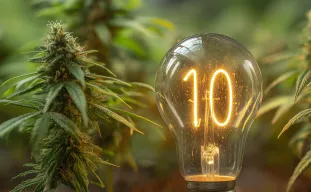 Grow Tips10 Tips for Maximum Yields from Your Cannabis PlantsIt's not as easy as throwing seeds into the ground and hoping for the best when you grow cannabis. I've learned the hard...2025-07-26
Grow Tips10 Tips for Maximum Yields from Your Cannabis PlantsIt's not as easy as throwing seeds into the ground and hoping for the best when you grow cannabis. I've learned the hard...2025-07-26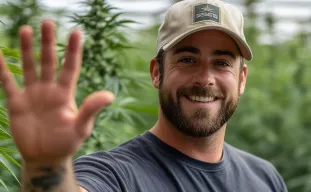 Grow Tips5 Secrets for Accelerating Autoflower Growth and Boost Harvest TimeIf you're reading this, I'm guessing you've had enough of waiting around for your autoflowers to hurry up and get their ...2025-06-20
Grow Tips5 Secrets for Accelerating Autoflower Growth and Boost Harvest TimeIf you're reading this, I'm guessing you've had enough of waiting around for your autoflowers to hurry up and get their ...2025-06-20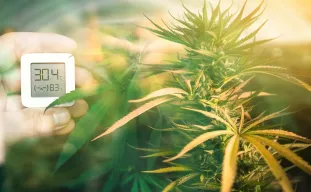 Grow TipsOptimizing Temperature and Humidity for Feminized Cannabis GrowthOptimizing temperature and humidity for feminized cannabis isn’t just a casual suggestion, it's bloody mandatory i...2025-05-21
Grow TipsOptimizing Temperature and Humidity for Feminized Cannabis GrowthOptimizing temperature and humidity for feminized cannabis isn’t just a casual suggestion, it's bloody mandatory i...2025-05-21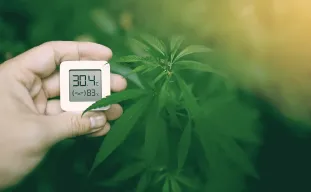 Grow TipsIdeal Temperature & Humidity for Growing Cannabis IndoorsStarting to grow your own cannabis plants indoors?
Indoor cannabis cultivation is actually rising in popularity. More gr...2025-04-03
Grow TipsIdeal Temperature & Humidity for Growing Cannabis IndoorsStarting to grow your own cannabis plants indoors?
Indoor cannabis cultivation is actually rising in popularity. More gr...2025-04-03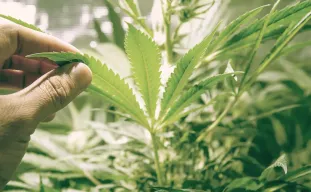 Grow Tips15 Essential Tips For Growing CannabisWhether you're new to growing cannabis or looking to improve your yields, following these key tips can help ensure a suc...2025-04-03
Grow Tips15 Essential Tips For Growing CannabisWhether you're new to growing cannabis or looking to improve your yields, following these key tips can help ensure a suc...2025-04-03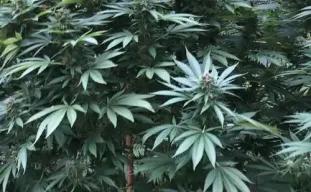 Grow TipsTips for Discreet Outdoor Autoflower Guerrilla GrowingFor eleven years, I’ve worked with cannabis cultivators all over the world in big indoor grows, tiny greenhouses, ...2024-12-03
Grow TipsTips for Discreet Outdoor Autoflower Guerrilla GrowingFor eleven years, I’ve worked with cannabis cultivators all over the world in big indoor grows, tiny greenhouses, ...2024-12-03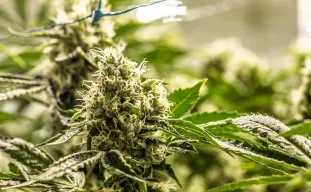 Grow Tips11 Tips for Bigger Autoflower BudsMany growers have heard that autoflowers produce smaller buds than other varieties, but this is something of a myth. The...2024-12-02
Grow Tips11 Tips for Bigger Autoflower BudsMany growers have heard that autoflowers produce smaller buds than other varieties, but this is something of a myth. The...2024-12-02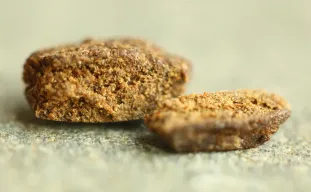 Grow TipsTop 5 Best Strains for Hash ProductionHashish (or hash) is a potent cannabis concentrate made from the trichomes of marijuana plants.
Hash usually produces a ...2024-11-29
Grow TipsTop 5 Best Strains for Hash ProductionHashish (or hash) is a potent cannabis concentrate made from the trichomes of marijuana plants.
Hash usually produces a ...2024-11-29Top Lists
Explore top cannabis strains, tools, and techniques with curated top lists from WeedSeedsExpress. Make informed decisions for your grow.
Browse all Top Lists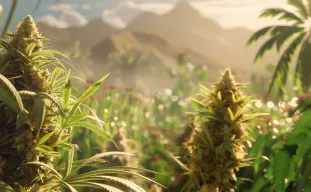 Top ListsTop 7 Landrace Cannabis Strains Every Grower Should CultivateHybrids are the most common type of cannabis on the market today. Breeders are always looking for the next THC strain th...2025-09-10
Top ListsTop 7 Landrace Cannabis Strains Every Grower Should CultivateHybrids are the most common type of cannabis on the market today. Breeders are always looking for the next THC strain th...2025-09-10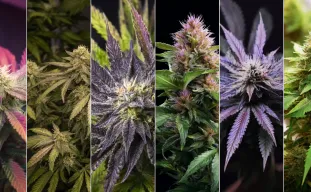 Top ListsTop 6 Most Relaxing Indica Strains for Sleep and Stress ReliefLife's constant hustle can make it hard to fall asleep at night. We toss and turn in bed, trying to get to sleep but bei...2025-08-13
Top ListsTop 6 Most Relaxing Indica Strains for Sleep and Stress ReliefLife's constant hustle can make it hard to fall asleep at night. We toss and turn in bed, trying to get to sleep but bei...2025-08-13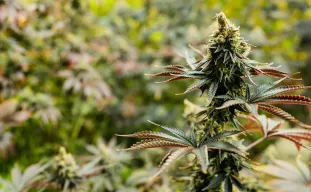 Top Lists10 Strongest Autoflower Strains With Up to 37% THC 🤯Autoflowering cannabis strains have changed a lot over the past ten years. They went from being low-THC novelties to pow...2025-07-02
Top Lists10 Strongest Autoflower Strains With Up to 37% THC 🤯Autoflowering cannabis strains have changed a lot over the past ten years. They went from being low-THC novelties to pow...2025-07-02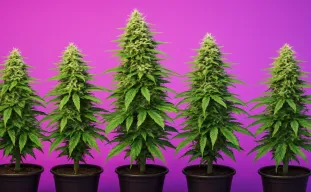 Top Lists5 Best Autoflower Strains for Stealth and Discreet GrowingAlright, so you wanna grow weed, but you’re not exactly shouting about it from your rooftop, eh? Totally get it. N...2025-06-25
Top Lists5 Best Autoflower Strains for Stealth and Discreet GrowingAlright, so you wanna grow weed, but you’re not exactly shouting about it from your rooftop, eh? Totally get it. N...2025-06-25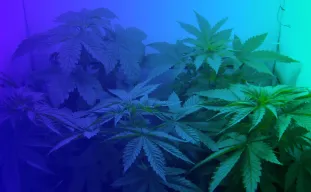 Top ListsTop 5 Easiest Feminized Cannabis Seeds to Grow for BeginnersWhen I first dipped my grubby little paws into the world of growing, the idea of "easy" cannabis strains felt about as b...2025-06-04
Top ListsTop 5 Easiest Feminized Cannabis Seeds to Grow for BeginnersWhen I first dipped my grubby little paws into the world of growing, the idea of "easy" cannabis strains felt about as b...2025-06-04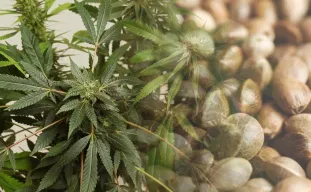 Top Lists10 Short Growing Sativa StrainsSativa plants tend to grow very tall, which can be a problem for indoor growers or those with limited space. Fortun...2025-05-30
Top Lists10 Short Growing Sativa StrainsSativa plants tend to grow very tall, which can be a problem for indoor growers or those with limited space. Fortun...2025-05-30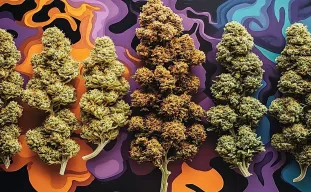 Top Lists7 Feminized Cannabis Strains Famous for Their Unique FlavorsWhen you're smoking weed, it ain’t just about getting baked, it's about savoring the whole experience. Real grower...2025-05-28
Top Lists7 Feminized Cannabis Strains Famous for Their Unique FlavorsWhen you're smoking weed, it ain’t just about getting baked, it's about savoring the whole experience. Real grower...2025-05-28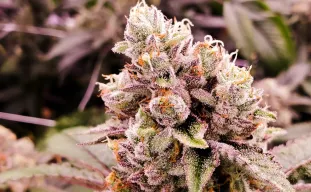 Top Lists10 Best Indica Strains of All Time 🏆With their high levels of CBD, Indica strains are popular for those looking to unwind, destress, and get a good night's ...2025-04-02
Top Lists10 Best Indica Strains of All Time 🏆With their high levels of CBD, Indica strains are popular for those looking to unwind, destress, and get a good night's ...2025-04-02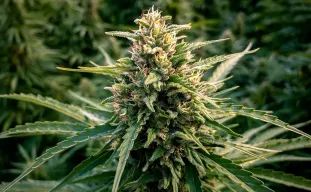 Top ListsTop 5 High CBD Cannabis StrainsWith the growing interest in the therapeutic uses of cannabis, high CBD strains are becoming increasingly popular. CBD, ...2025-04-02
Top ListsTop 5 High CBD Cannabis StrainsWith the growing interest in the therapeutic uses of cannabis, high CBD strains are becoming increasingly popular. CBD, ...2025-04-02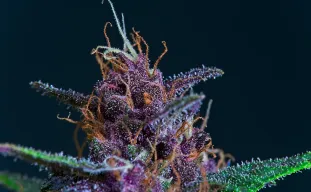 Top ListsTop 5 Best Purple Weed Strains 🍇Many of us have only seen purple cannabis plants in pictures, admiring their striking lavender hues and wondering how to...2025-04-02
Top ListsTop 5 Best Purple Weed Strains 🍇Many of us have only seen purple cannabis plants in pictures, admiring their striking lavender hues and wondering how to...2025-04-02Informational
Dive into the world of cannabis with informational blogs on its history, uses, science, and industry trends at WeedSeedsExpress.
Browse all Informational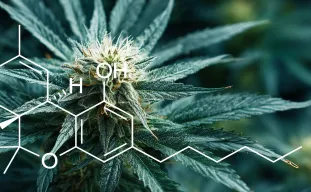 InformationalStudy: Quantification of THC Levels in Different Varieties of Cannabis SativaWe have another interesting study to share with you, cannabis growers. This one is all about figuring out THC levels, wh...2025-09-17
InformationalStudy: Quantification of THC Levels in Different Varieties of Cannabis SativaWe have another interesting study to share with you, cannabis growers. This one is all about figuring out THC levels, wh...2025-09-17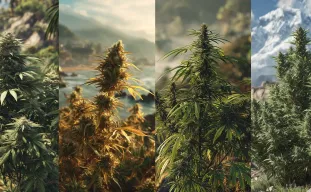 InformationalWhat Are Landrace Cannabis Strains and Why Are They Special?Landrace strains are highly valued in the large and varied world of cannabis because they are real and have been around ...2025-09-05
InformationalWhat Are Landrace Cannabis Strains and Why Are They Special?Landrace strains are highly valued in the large and varied world of cannabis because they are real and have been around ...2025-09-05 InformationalUnderstanding Pure Indica Cannabis: Traits, Effects, and Cultivation TipsA lot of people talk about "indica" and "sativa" when they talk about cannabis these days, but many new and even experie...2025-08-20
InformationalUnderstanding Pure Indica Cannabis: Traits, Effects, and Cultivation TipsA lot of people talk about "indica" and "sativa" when they talk about cannabis these days, but many new and even experie...2025-08-20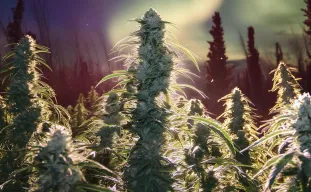 InformationalStudy: How Cold Stress Affects Cannabis GrowingFarmers all over the world are under more and more pressure to change the waypperg they do things as the world's climate...2025-08-15
InformationalStudy: How Cold Stress Affects Cannabis GrowingFarmers all over the world are under more and more pressure to change the waypperg they do things as the world's climate...2025-08-15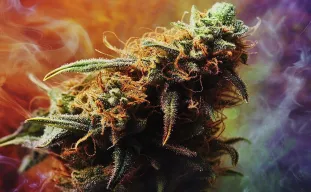 InformationalStudy: Unveiling the True Connection Between Cannabis Effects, Flavors, and Chemical CompositionThe cannabis market is growing quickly, and both recreational and medical users now have a lot of choices, each with its...2025-08-01
InformationalStudy: Unveiling the True Connection Between Cannabis Effects, Flavors, and Chemical CompositionThe cannabis market is growing quickly, and both recreational and medical users now have a lot of choices, each with its...2025-08-01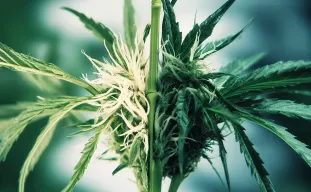 InformationalUnderstanding Cannabis Hybridization: How New Strains Are CreatedWalk into any dispensary or browse any online seed bank today, and you’ll be bombarded with names like “Zkit...2025-07-30
InformationalUnderstanding Cannabis Hybridization: How New Strains Are CreatedWalk into any dispensary or browse any online seed bank today, and you’ll be bombarded with names like “Zkit...2025-07-30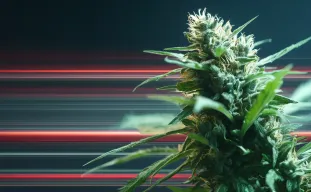 InformationalFast-Flowering Cannabis Seeds Explained: What Makes These Strains Finish So Quickly?As cannabis cultivation continues to grow around the world, growers of all kinds, from newbies who don't have much patie...2025-07-24
InformationalFast-Flowering Cannabis Seeds Explained: What Makes These Strains Finish So Quickly?As cannabis cultivation continues to grow around the world, growers of all kinds, from newbies who don't have much patie...2025-07-24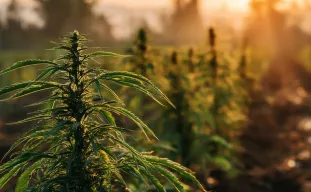 InformationalStudy: Environmental Impacts of Cannabis CultivationAs cannabis laws change all over the world, more and more people are getting into the business of growing it, from small...2025-07-16
InformationalStudy: Environmental Impacts of Cannabis CultivationAs cannabis laws change all over the world, more and more people are getting into the business of growing it, from small...2025-07-16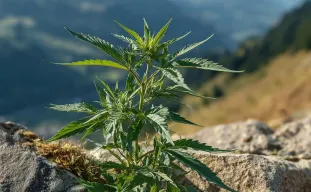 InformationalHow Autoflower Genetics Changed Cannabis Growing ForeverAutoflower cannabis strains have changed the way both commercial growers and hobbyist growers take care of their plants....2025-07-05
InformationalHow Autoflower Genetics Changed Cannabis Growing ForeverAutoflower cannabis strains have changed the way both commercial growers and hobbyist growers take care of their plants....2025-07-05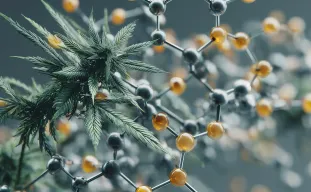 InformationalStudy: How Nitrogen Nutrition Impacts Cannabis GrowingAny experienced grower will tell you that nitrogen is a key nutrient for cannabis. But knowing how nitrogen affects the ...2025-07-01
InformationalStudy: How Nitrogen Nutrition Impacts Cannabis GrowingAny experienced grower will tell you that nitrogen is a key nutrient for cannabis. But knowing how nitrogen affects the ...2025-07-01Local Guides
Grow cannabis like a pro with our local guides. Region-specific tips, climate advice, and legal insights from WeedSeedsExpress.
Browse all Local Guides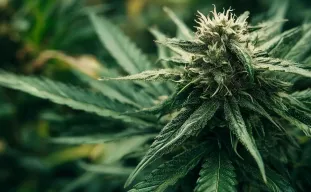 Local GuidesBest Indica Cannabis Strains for Growing Outdoors in Cooler Northern ClimatesIf you live in the northern hemisphere, especially in cooler places with shorter summers and harsher weather, growing ca...2025-08-30
Local GuidesBest Indica Cannabis Strains for Growing Outdoors in Cooler Northern ClimatesIf you live in the northern hemisphere, especially in cooler places with shorter summers and harsher weather, growing ca...2025-08-30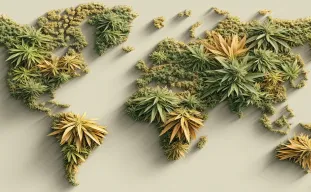 Local GuidesBest Landrace Cannabis Strains for Growing in Tropical ClimatesForget hybrids and fancy crosses. In the steamy, sun-drenched equator belt, nothing performs like a true landrace strain...2025-07-18
Local GuidesBest Landrace Cannabis Strains for Growing in Tropical ClimatesForget hybrids and fancy crosses. In the steamy, sun-drenched equator belt, nothing performs like a true landrace strain...2025-07-18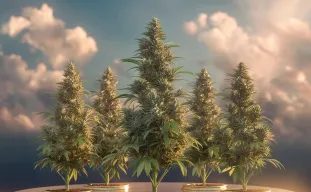 Local GuidesBest Autoflower Cannabis Strains to Grow in Short, Cool SummerSummer isn't always endless sunshine and tropical heat, especially if you're growing cannabis in places like Maine, the ...2025-07-03
Local GuidesBest Autoflower Cannabis Strains to Grow in Short, Cool SummerSummer isn't always endless sunshine and tropical heat, especially if you're growing cannabis in places like Maine, the ...2025-07-03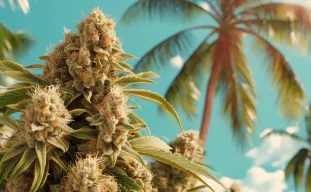 Local GuidesBest Feminized Strains for Outdoor Growing in Hot and Humid Tropical ClimatesGrowing cannabis outdoors is easy enough in the dreamy climates of California or Spain, but what about the rest of us? E...2025-06-11
Local GuidesBest Feminized Strains for Outdoor Growing in Hot and Humid Tropical ClimatesGrowing cannabis outdoors is easy enough in the dreamy climates of California or Spain, but what about the rest of us? E...2025-06-11 Local Guides10 Best Cannabis Strains To Grow in Thailand 🇹🇭Thailand boasts a tropical climate that many cannabis growers can only dream of. Its distinct wet and dry seasons, ...2024-11-30
Local Guides10 Best Cannabis Strains To Grow in Thailand 🇹🇭Thailand boasts a tropical climate that many cannabis growers can only dream of. Its distinct wet and dry seasons, ...2024-11-30Basics For Beginners
Start your cannabis journey with beginner-friendly tips and essential knowledge. Learn the basics at WeedSeedsExpress.
Browse all Basics For Beginners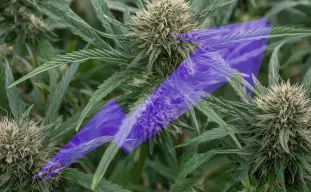 Basics For BeginnersHow Beginners Can Easily Boost Cannabis YieldTaking care of a cannabis plant from seed to harvest is undeniably magical. You water, trim, and wait, hoping that your ...2025-08-07
Basics For BeginnersHow Beginners Can Easily Boost Cannabis YieldTaking care of a cannabis plant from seed to harvest is undeniably magical. You water, trim, and wait, hoping that your ...2025-08-07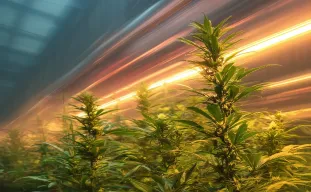 Basics For BeginnersBeginners' Guide to Growing Fast-Flowering Cannabis StrainsYou've decided to try growing cannabis, but you don't have a lot of patience. Or maybe you can only grow plants outside ...2025-07-11
Basics For BeginnersBeginners' Guide to Growing Fast-Flowering Cannabis StrainsYou've decided to try growing cannabis, but you don't have a lot of patience. Or maybe you can only grow plants outside ...2025-07-11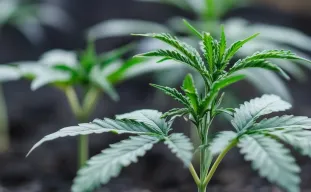 Basics For BeginnersHow to Pick the Best Feminized Seeds for Your First GrowAs home cultivation becomes more accessible under evolving cannabis laws, selecting the right feminized seeds is one of ...2025-06-06
Basics For BeginnersHow to Pick the Best Feminized Seeds for Your First GrowAs home cultivation becomes more accessible under evolving cannabis laws, selecting the right feminized seeds is one of ...2025-06-06 Basics For BeginnersCBD vs THC - Differences ExplainedWhen looking at the specifications of cannabis seeds in our catalog, you may often notice references to high or low leve...2025-04-03
Basics For BeginnersCBD vs THC - Differences ExplainedWhen looking at the specifications of cannabis seeds in our catalog, you may often notice references to high or low leve...2025-04-03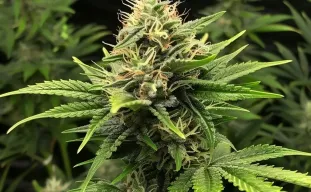 Basics For BeginnersThe Ultimate Autoflower Cannabis Seeds FAQ: Everything You Need to KnowIntroduction
Autoflowering cannabis seeds have become extremely popular among growers due to their ease of cultivation, ...2025-02-17
Basics For BeginnersThe Ultimate Autoflower Cannabis Seeds FAQ: Everything You Need to KnowIntroduction
Autoflowering cannabis seeds have become extremely popular among growers due to their ease of cultivation, ...2025-02-17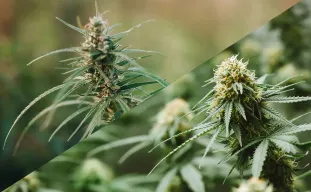 Basics For BeginnersIndica vs Sativa (10 Key Differences For Beginners)Indica and sativa are two of the main types of cannabis, and each offers different effects and uses.
This article will b...2024-10-09
Basics For BeginnersIndica vs Sativa (10 Key Differences For Beginners)Indica and sativa are two of the main types of cannabis, and each offers different effects and uses.
This article will b...2024-10-09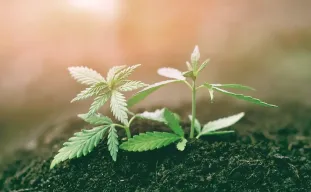 Basics For BeginnersHow to Plant Weed Seeds After Gemination?You have finished germinating your marijuana seeds, and it is now time to begin planting them. Planting cannabis seeds i...2024-09-17
Basics For BeginnersHow to Plant Weed Seeds After Gemination?You have finished germinating your marijuana seeds, and it is now time to begin planting them. Planting cannabis seeds i...2024-09-17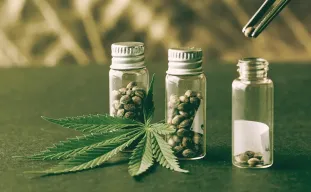 Basics For BeginnersStoring Cannabis Seeds Guide: How To Store Weed Seeds?All great cannabis plants begin with quality seeds. Unfortunately, many growers overlook the simple fact that weed seeds...2024-09-17
Basics For BeginnersStoring Cannabis Seeds Guide: How To Store Weed Seeds?All great cannabis plants begin with quality seeds. Unfortunately, many growers overlook the simple fact that weed seeds...2024-09-17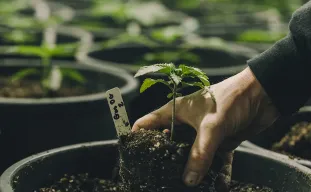 Basics For BeginnersGuide to choosing the right weed plant pot sizeChoosing a pot for your cannabis plant is an essential task in growing weed, perhaps even the most important.
Yet, its i...2024-09-17
Basics For BeginnersGuide to choosing the right weed plant pot sizeChoosing a pot for your cannabis plant is an essential task in growing weed, perhaps even the most important.
Yet, its i...2024-09-17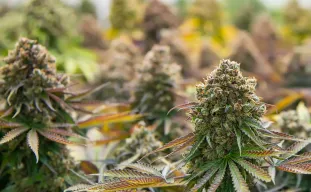 Basics For BeginnersGrowing Weed Indoors Beginners GuideLearn How to Grow Weed Indoors
You have chosen to grow cannabis indoors instead of outdoors. After all, indoor growing c...2024-07-30
Basics For BeginnersGrowing Weed Indoors Beginners GuideLearn How to Grow Weed Indoors
You have chosen to grow cannabis indoors instead of outdoors. After all, indoor growing c...2024-07-30Grow Techniques
Master cannabis cultivation with advanced grow techniques. Tips and methods to boost yields and improve plant health at WeedSeedsExpress.
Browse all Grow Techniques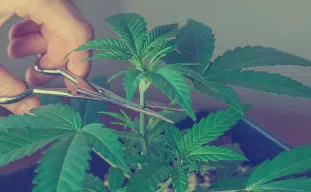 Grow TechniquesGuide to Topping and Pruning Indica Cannabis for Maximum Yield and PotencyIf your indica cannabis plants are getting bigger than your quarantine beard, it's time to take care of them yourself. T...2025-08-22
Grow TechniquesGuide to Topping and Pruning Indica Cannabis for Maximum Yield and PotencyIf your indica cannabis plants are getting bigger than your quarantine beard, it's time to take care of them yourself. T...2025-08-22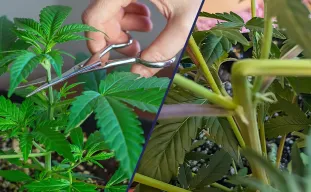 Grow TechniquesSuper Cropping vs. Topping: Which Technique Delivers Higher Cannabis Yields?Consider this: You are in your lush grow room, where you can see your healthy cannabis plants. You can't stop thinking a...2025-08-05
Grow TechniquesSuper Cropping vs. Topping: Which Technique Delivers Higher Cannabis Yields?Consider this: You are in your lush grow room, where you can see your healthy cannabis plants. You can't stop thinking a...2025-08-05 Grow TechniquesHow to Use Sea of Green Technique to Maximize Your Fast-Flowering Cannabis YieldWant to get every last gram out of your fast-flowering cannabis strains? Say hello to the Sea of Green (SOG) method, whi...2025-07-09
Grow TechniquesHow to Use Sea of Green Technique to Maximize Your Fast-Flowering Cannabis YieldWant to get every last gram out of your fast-flowering cannabis strains? Say hello to the Sea of Green (SOG) method, whi...2025-07-09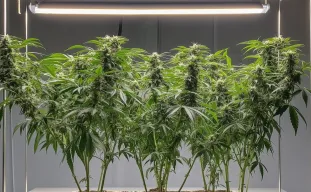 Grow TechniquesHow to Apply Mainlining Technique to Autoflower Cannabis PlantsAlright, fellow growers, today we're diving into a slightly controversial subject: mainlining autoflowers. Yeah, I can a...2025-06-27
Grow TechniquesHow to Apply Mainlining Technique to Autoflower Cannabis PlantsAlright, fellow growers, today we're diving into a slightly controversial subject: mainlining autoflowers. Yeah, I can a...2025-06-27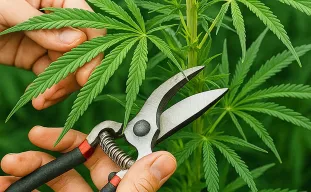 Grow TechniquesDefoliation Techniques for Feminized Cannabis: Boost Airflow & Yield QualityGrowing cannabis isn’t about being perfect, it's about being bloody effective. If you're growing feminized cannabi...2025-06-13
Grow TechniquesDefoliation Techniques for Feminized Cannabis: Boost Airflow & Yield QualityGrowing cannabis isn’t about being perfect, it's about being bloody effective. If you're growing feminized cannabi...2025-06-13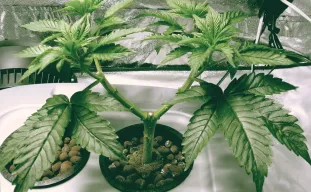 Grow TechniquesGuide: Mainlining Weed Plants (manifold cannabis)Whether you are new to cannabis growing or have experience, you probably have considered mainlining. You might not know ...2025-04-03
Grow TechniquesGuide: Mainlining Weed Plants (manifold cannabis)Whether you are new to cannabis growing or have experience, you probably have considered mainlining. You might not know ...2025-04-03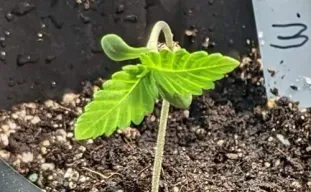 Grow TechniquesThe Best Soil to Use for Autoflower PlantsI've been growing cannabis for years, and in that time, I've witnessed firsthand the rise of autoflowering strains. Thes...2024-12-03
Grow TechniquesThe Best Soil to Use for Autoflower PlantsI've been growing cannabis for years, and in that time, I've witnessed firsthand the rise of autoflowering strains. Thes...2024-12-03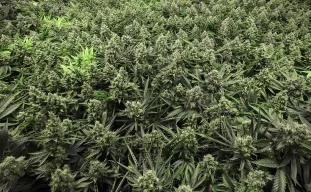 Grow TechniquesSea of Green method (SOG) - The Ultimate GuideAs growing weed gradually moved from outdoor to indoor cultivation, growers quickly came to the conclusion that placing ...2024-09-17
Grow TechniquesSea of Green method (SOG) - The Ultimate GuideAs growing weed gradually moved from outdoor to indoor cultivation, growers quickly came to the conclusion that placing ...2024-09-17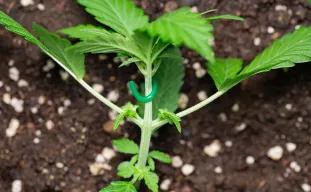 Grow TechniquesLow Stress Training for Autoflower Strains (LST)Want to know how autoflower low-stress training (LST) works and when to use it? Here, we look at how LST can help improv...2024-09-17
Grow TechniquesLow Stress Training for Autoflower Strains (LST)Want to know how autoflower low-stress training (LST) works and when to use it? Here, we look at how LST can help improv...2024-09-17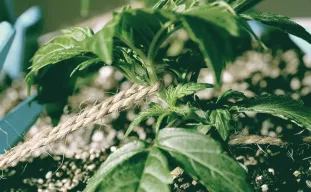 Grow TechniquesStep by Step Guide: Low Stress Training (LST)After you have planted your weed seeds and the cannabis plants get older, their leaves become increasingly thick and bus...2024-07-30
Grow TechniquesStep by Step Guide: Low Stress Training (LST)After you have planted your weed seeds and the cannabis plants get older, their leaves become increasingly thick and bus...2024-07-30WeedSeedsExpress Blog
Get yourself informed on all topics related to cannabis seeds and growing!